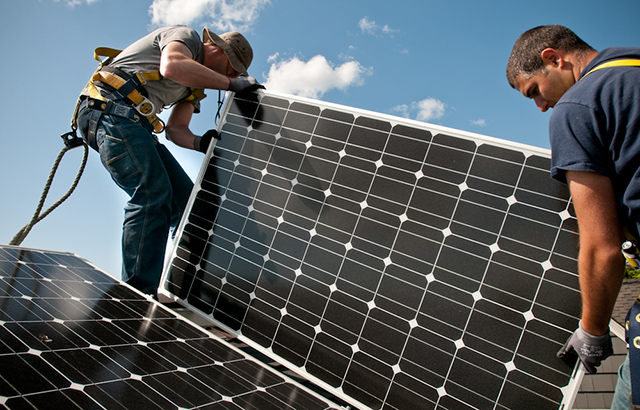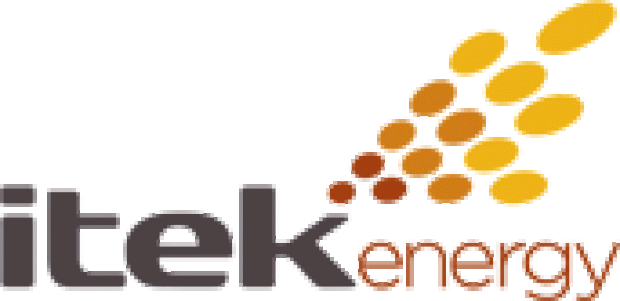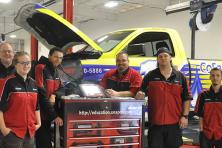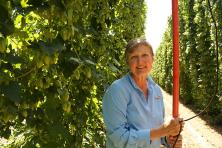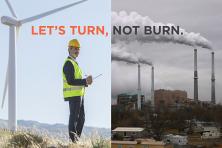In a community at the crossroads of our shared energy future, a growing solar company is making the clean economy real.
The city of Bellingham sits along a beautiful northern stretch of the Puget Sound. It’s the county seat of Whatcom County, Washington, providing easy access to the San Juan Islands and the mountains of the North Cascades. If fossil fuel companies have their way, Bellingham could become a conduit for exporting massive amounts of coal across the Pacific. But the city already has a signature energy product: solar. Bellingham is home to itek energy, a solar panel manufacturer that has helped make Whatcom County the most solarized county in the state.
Dana Hickenbottom is a technical support worker at itek. He says the best part if his job is visiting homeowners and small business owners who have installed Itek panels and watching their reactions as their electricity meters spin backwards. Dana is concerned about climate change but remains motivated by that fact that his job is helping our state do something about it.
Check out the audio interview with Dana above or read the Q and A below.
Can you walk me through a typical day at itek?
A typical day involves a lot of interacting with both solar installers that we distribute our modules and inverters to, helping them with system sizing questions, any type of troubleshooting in the install process if they happen to be unclear on anything I can help them through the process. I often do site visits as well to help get systems going in the area. Luckily we’ve been really happy with the reliability of our products. I talk a lot with homeowners, explaining how solar works, explaining he benefits of Washington, clearing up questions, steering them towards the right installers.
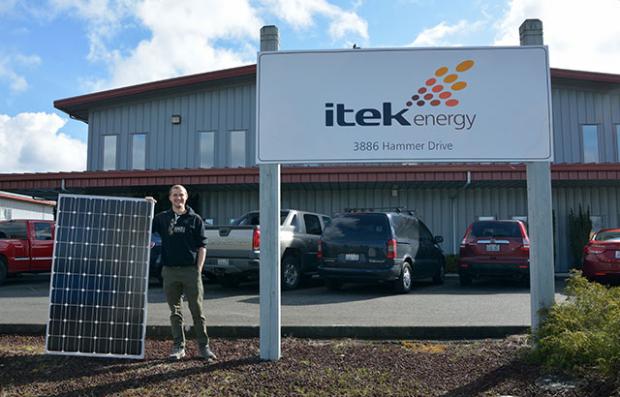
Dana Hickenbottom
Currently we are working on a lot of product development. We’ve got some new modules that we are working on and we continue to find ways to create a unique product for the market. We look at how the industry is moving – which is fast! – and explore new pieces of equipment that can be integrated into existing modules, new upgraded electrical codes in certain areas. I do a lot of communicating in the region as well as internal work on testing our inverters, ordering supplies, maintaining the website and so on.
What is the split between commercial and residential?
We mainly work on residential solar – that represents about 90% of our business. The way that the incentive structure works – a $5,000 cap on the production incentive – creates a great market for smaller residential systems. Depending on the site that’s between an 8-10 kW system will maximize that incentive. It’s been a very good sales tool for installers to design systems within that range to try and maximize that production incentive.
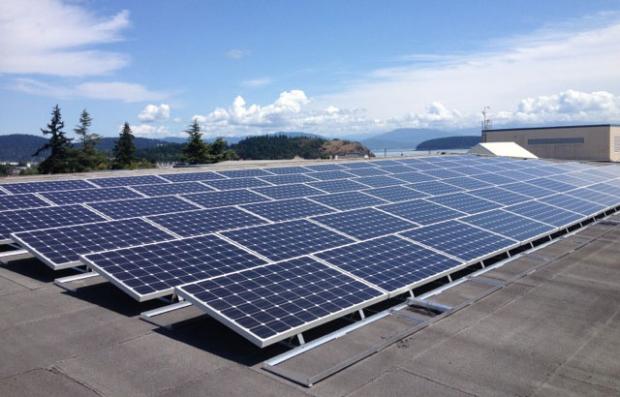
Solar on the roof at Anacortes Middle School
And though residential is still our bed and butter, we have seen an increase in solar on the commercial side in Washington. There is a program through the Department of Commerce that allocates grant money to Washington municipalities for going solar. So that’s a helpful jumpstart for the larger market here in the state. Many of the installers we work with have started adding dedicated crews for commercial so it’s definitely on the rise. We are starting to see a shift towards more commercial projects that I think is great.
What are the energy numbers for solar installed by itek?
In our first year, 2012, itek alone sold over 2 megawatts of solar modules. We know that all of it went directly into Washington systems because that is our market. We sold 4 megawatts in 2013. So that’s at least 6 megawatts of solar power that itek has provided throughout Washington. We anticipate 2014 being at least double last year – so over 8 megawatts. We may get to 10-12 megawatts if we keep up our current pace. Statewide we are between 11-12 megawatts of solar installed – counting out of state and the other Washington manufacturers. Solar is really starting to take off here.
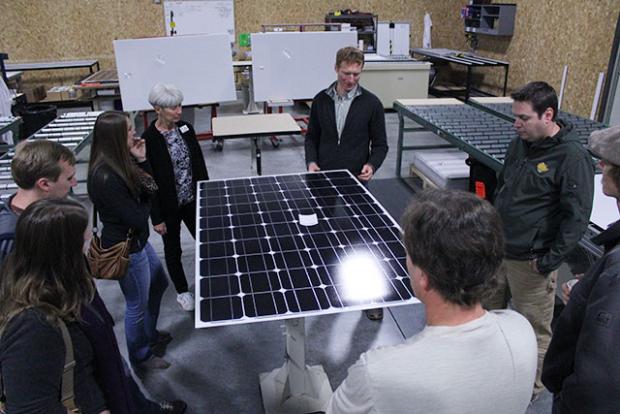
What is it about this work in clean energy that motivates you everyday?
What motivates me everyday is being part of this movement towards a renewable future and shift away from fossil fuel-based energy production. The direct interaction I have with other small businesses and homeowners each day shows me that a community is forming around this movement of using new technology to empower ourselves and our communities. And to show people that solar works in Washington. Sure, we have a lot of cloudy weather but we also have a lot of cooler sunny days that are prime for solar generation. Being part of this clean energy movement is really cool. Growing up here I always thought “I really want to make a difference is the world.” I’ve had jobs in the past where I’ve had to make some big justifications for the work. At this job I can go out and see these systems working, I can talk to homeowners, I can see their enthusiasm, and I can see their meter spinning backwards. It’s that direct impact that I’ve been seeking for a while where you can see the benefit of your work – that’s really motivating to me.
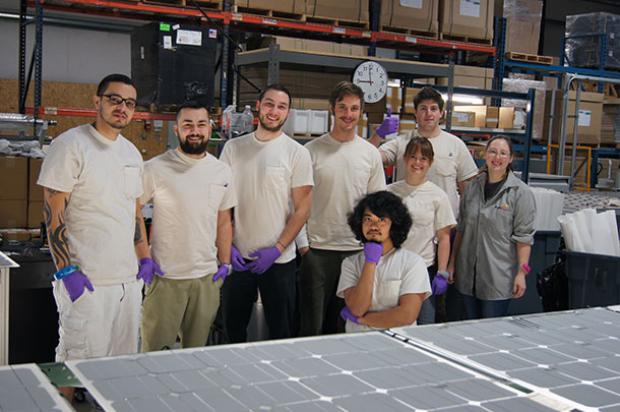
The layup crew at itek
Did you have teachers who were influential along the way?
Yes. I ended up going to the Oregon Institute of Technology where I was in the Renewable Energy Engineering. There I got to know professors who are doing really great work both inside and outside of academia, both in the region and across the globe.
In high school I had some great science and math teachers. In particular my high school science teacher for several classes, Mrs. Skillingstad, she instilled in me a good sense of experimentation and designing your own experiment. I use those skills every day as things come up at work. The ability to think creatively and find solutions is huge.
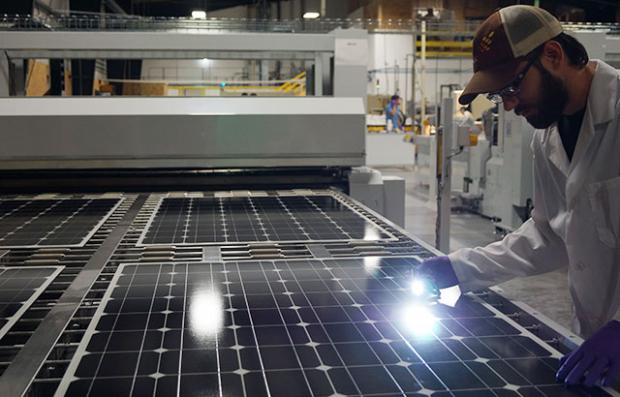
Panel inspection by Nick VanDyken
What benefits of clean energy mean the most to you?
The work to reduce our fossil fuel emissions, trying to curb climate change. Decentralizing the traditional power transmission system and grid structure is really appealing to me. Bringing this ability for homeowners to generate their own electricity and decentralizing this traditional structure that we’ve had for so long. I think that’s a huge benefit. Creating these microgrids within a community is one more thing that can create sense of community. There are all these different movements: slow food, community gardens, and so on. To actually have community energy generation is such a cool idea. People can feel a sense of ownership over their energy and knowing where it’s coming from, becoming much more conscious about how much they use as opposed to this anonymous power ling that’s delivering your power you can actually see this system that is generating electricity for you.
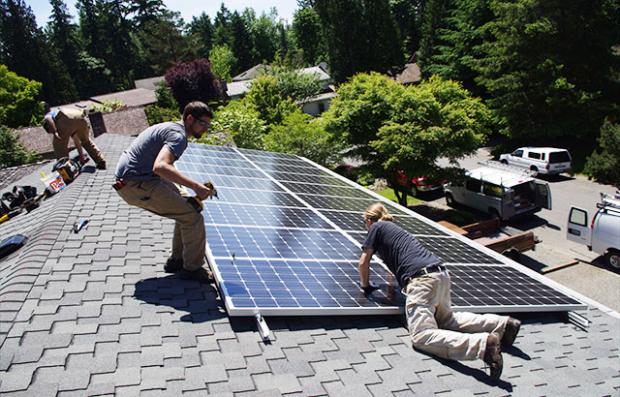
How does climate change affect your view of your work?
Climate change creates a sense of urgency to our work here and a sense of motivation. Speaking personally, my wife is expecting; we have a kid on the way. When these things happen you start thinking more and more not only about your future but the future of your children and what kind of world you want to leave them.
Down the road are they going to look back and be embarrassed of how we are acting today and that we didn’t take more proactive measures to try and curb climate change and change our view of energy usage and generation? So climate change is a big driving and motivating factor behind why I’d like to continue this work. It’s always in the background of other projects I’ve been working on. Right now I’m trying to get a renewable energy education program to be used in classrooms – working with elementary, middle and high school kids – to get students introduced to different technologies so that as they’re growing up they see solar and wind as common forms of energy. I’d like to help create a new generation of energy-conscious people.
Many in the region have called Bellingham a crossroads community, an area facing a choice between locking in fossil fuel infrastructure (coal export facility at Cherry Point) and investing in a cleaner, more renewable path forward. What does this scenario mean for you and your community?
I think it’s incredibly important for Bellingham and our region to show the world or whoever is watching that we can make a choice to move away from fossil fuels and work towards a more sustainable future. That means NOT looking at these short-term profits. Let’s look at job creation opportunities that can last through investment in the clean energy economy as opposed to investment in coal exports and making a quick buck off of this fossil fuel export. We should really be shifting that focus toward a clean energy path.
If as a community, we can stand up and show that we’ve made this choice of clean energy it can be a flagship example for other communities are looking to make changes. It’s a crucial crossroads. I hope that we are able to show our kids that we made a good choice in clean energy instead of more fossil fuels.
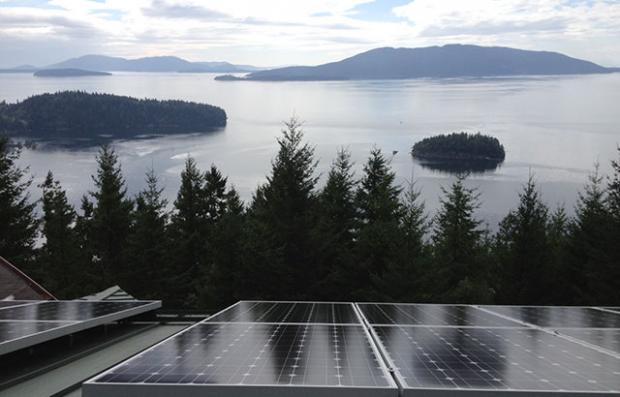
What is your vision for the future of Bellingham?
As I mentioned before, I’d love to see community energy gardens in our city where were able to utilize our resources together and produce energy in a more democratic and secure fashion. Right now Whatcom County per capita has more solar than any other county in Washington. There is definitely a solar movement happening in Bellingham. It’s a very interesting time for the industry with how much growth we’ve seen over the last few years, and how much growth is projected for the future. It’s going to be fascinating to see how things move and change.
--------------------------------------------------------------
As Dana mentioned, don’t let the clouds in the Northwest fool you – this region is prime for solar, with both sides of the Cascades offering huge opportunities for growth. And Itek Energy in Whatcom County is one of the companies making it real. Dana and the Itek team have helped make Whatcom County the most solarized county in Washington. But if fossil fuel companies have their way, Bellingham and Whatcom County could become a conduit for exporting massive amounts of coal across the Pacific. To learn more and take action to stop coal export off the West Coast, check out PowerPastCoal.org. To learn more about itek energy, check out itekenergy.com. And to learn more about solar progress in Washington, check out Solar Washington.
